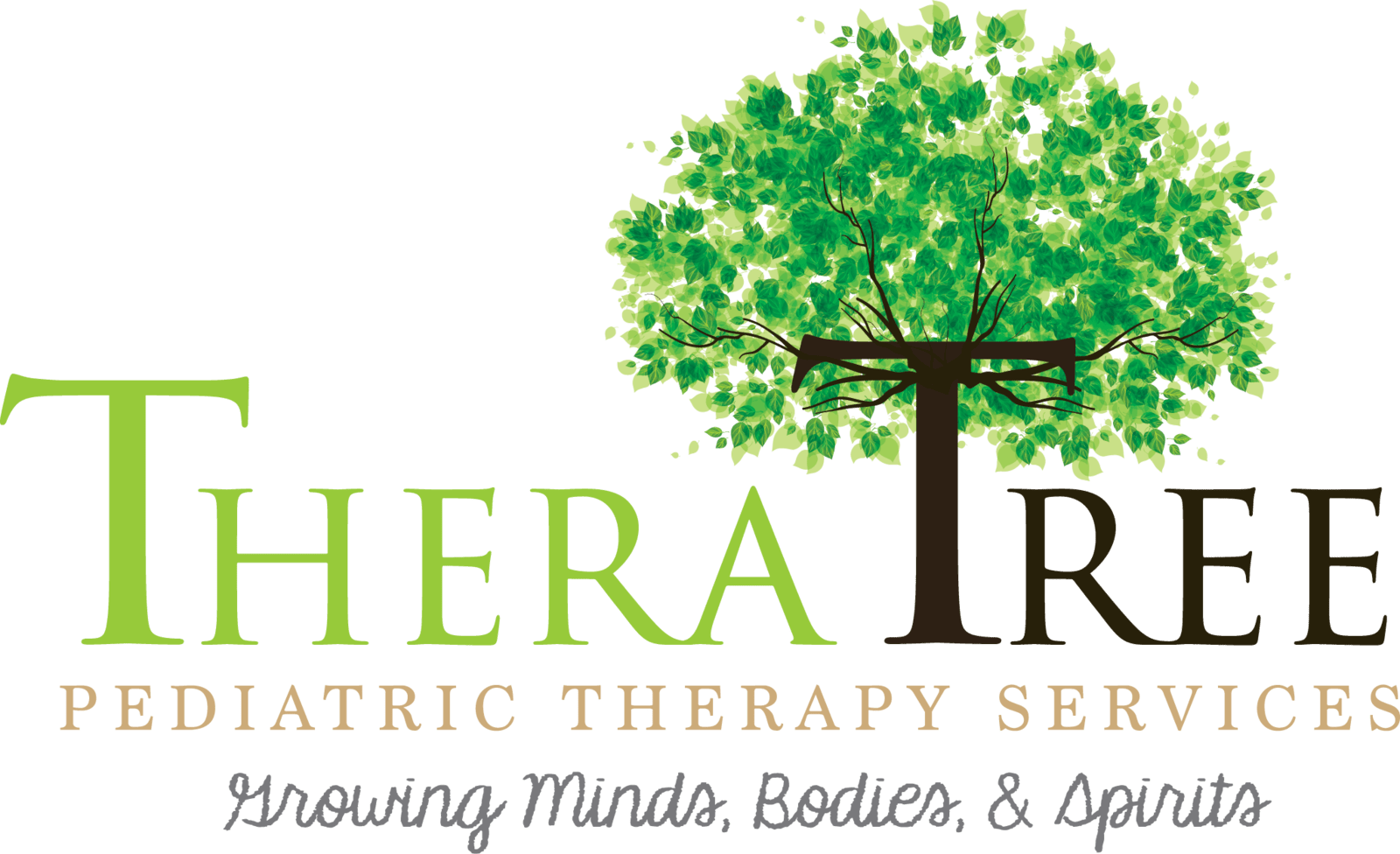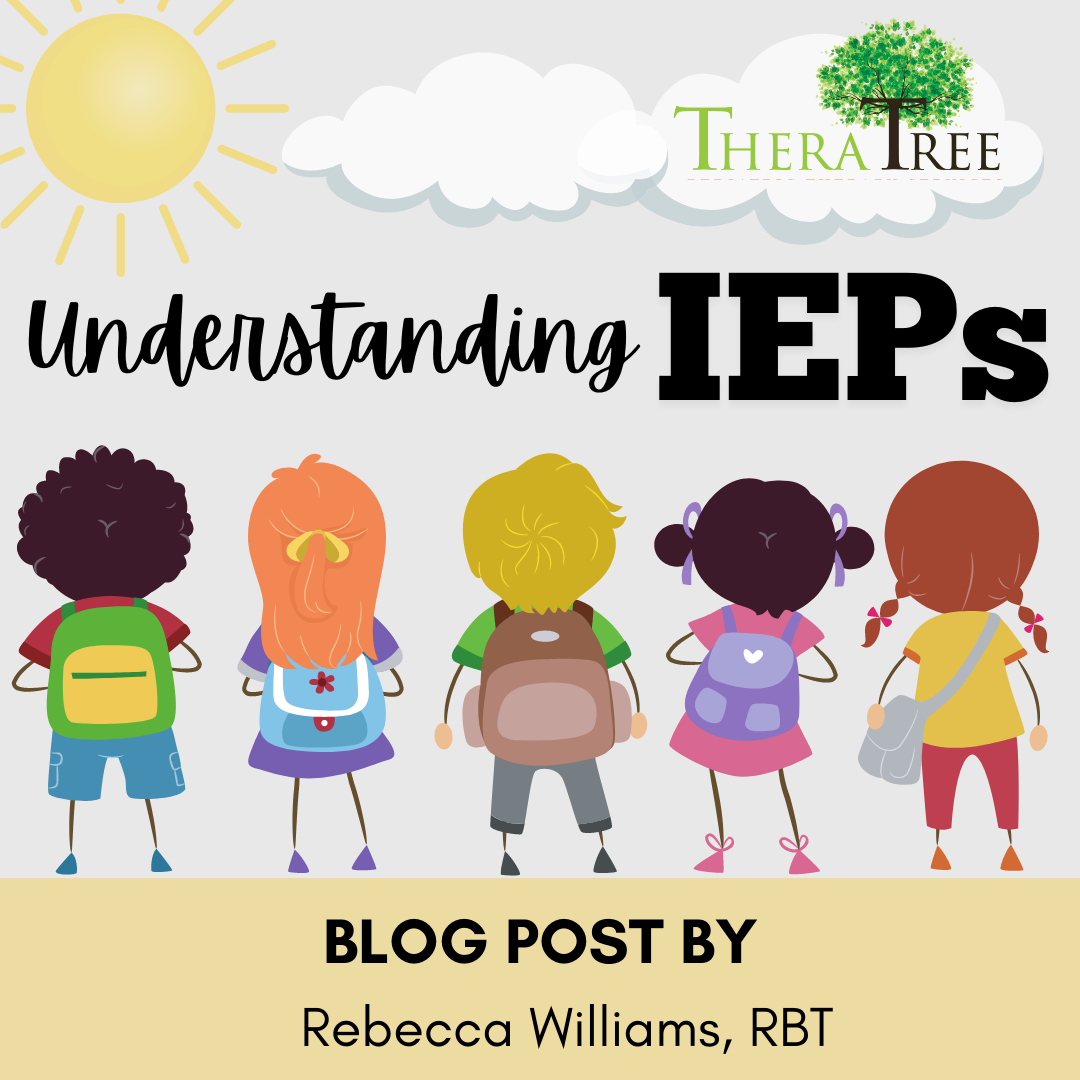
Plan & Student Information
Plan Information: IEPs are active for one calendar year. If an IEP is put in place on 4/26/2022, that is the meeting date/start date and 4/25/2023 will be the end date. Depending on the district, most annual meetings are scheduled at least two weeks before the end date of the current IEP.
Special education status indicates if students are actively receiving special education services, meaning that they have a current IEP in place. Special education setting is typically written as a percentage of the day in general education classes or may indicate special circumstances, such as home hospital.
The primary disability listed here is the disability determined by evaluation at the school. This may vary from other diagnoses/disabilities identified outside of the school setting.
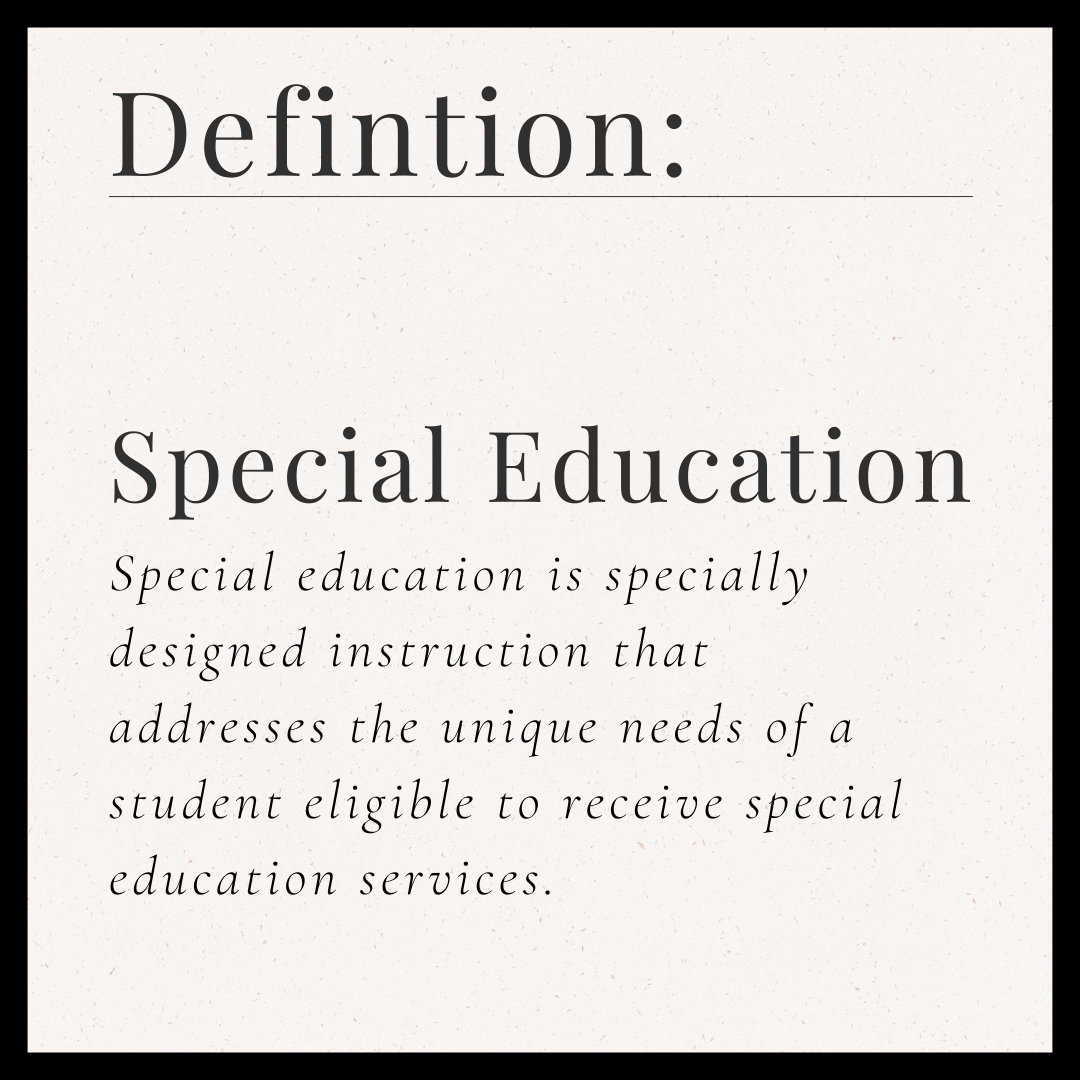
Student Information: The student information is the information on file at your child’s school (name, birthday, address, grade, school, gender, race). If any of this information is incorrect at any time, make sure to let your school secretary know to update your child’s information on all school information.
Present Levels of Academic Achievement and Functional Performance
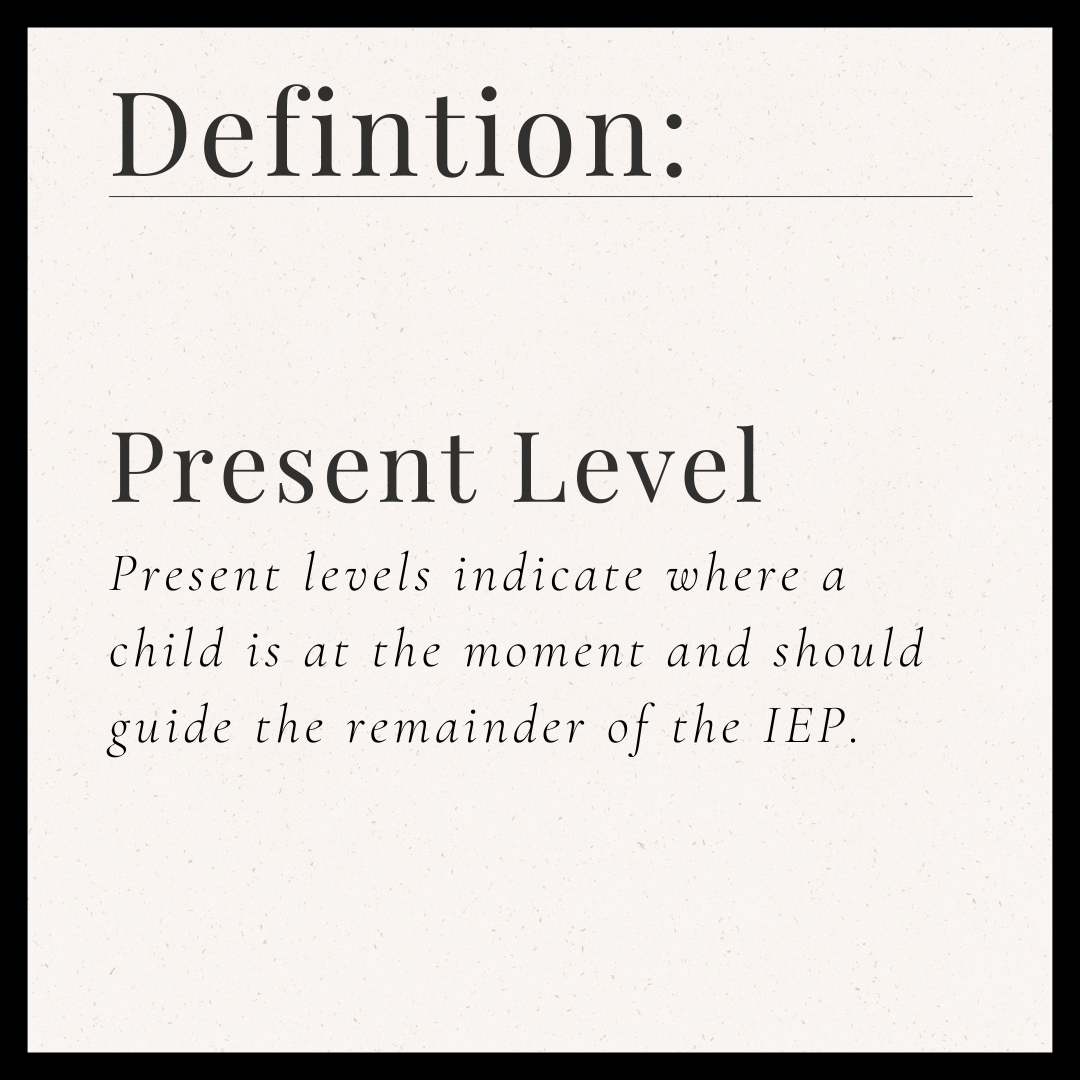
There are seven sub-sections in the present levels:
- Communication status
- Academic performance
- Health, vision, hearing, and motor abilities
- Social and emotional status
- General intelligence
- Functional vision/learning media assessment
- Functional hearing, listening, and communication assessment.
Depending on your child, there may only be one or two of these sections completed, or there may be several. The most common sections are communication, academic, health, social/emotional, and general intelligence. For areas that are not a concern, there is a box that would be checked to indicate that there is no information needed for that area.
For the areas of concern, it should include baseline data (starting point for new goals), individual strengths and weaknesses in the area, comparison to same-age peers (using MAP scores, KPREP scores, and/or any recent evaluation data), and the adverse effect that the deficits in that area have on the child’s education.
In the academic performance section, all areas of concern should be addressed separately (reading, math, writing).
Each area that is determined to be an area of need must have a goal related to it (discussed later in the IEP).
Transition Services Needs
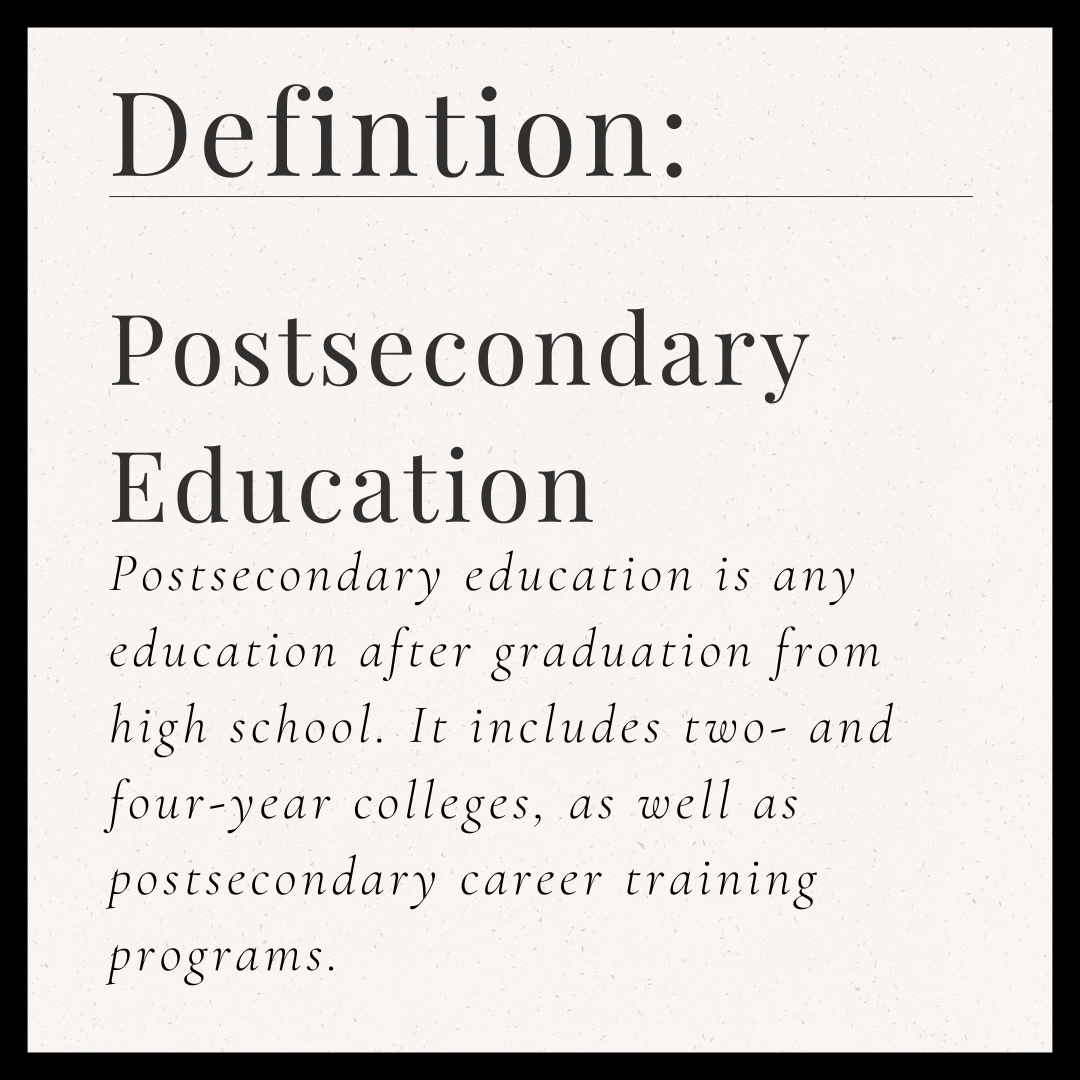
Course of Study: When transition becomes part of the discussion, a multi-year course of study must be completed, starting with the current school year and mapped out through graduation/completion of high school. This course of study is not set in stone, but is a starting point for planning courses that will assist in meeting the identified transition goals.
Transfer of Rights at Age of Majority: The final transition section is specifically for high school. This states that when a child turns 18, they will be able to make their own decisions regarding all special education services. The child and parent must be made aware of this at least one year before the 18th birthday, but some districts may choose to start this conversation during the child’s freshman year.
Consideration of Special Factors for IEP Development
This section looks at things such as behavior, limited English proficiency, visual impairments, communication needs, hearing impairments, and assistive technology. If any of these things are identified as something that impacts learning, most often, it will refer back to the present levels and/or provide a brief explanation of the needs. This is also where it is indicated if a child has a behavior intervention plan (BIP), which is a separate document.
Measurable Annual Goals and Benchmarks
All goals must be related to the information provided in the present levels.
Some districts require benchmarks or short-term objectives. This takes the goal and breaks it into smaller chunks to focus on one thing at a time. Once transition is a discussion in the IEP, the goals need to be connected to the post-secondary goals to assist in meeting those goals.
- Specific
- Measurable
- Attainable
- Realistic
- Time based
The method of measurement indicates how the teacher plans to monitor the goals. This can be done in four general ways:
- Curriculum-based measurement:
- Oral reading fluency probe
- Math computation probe
- Math concepts
- Applications probe
- Direct measures:
- Frequency count/event recording
- Duration recording
- ABC recording – antecedent, behavior, consequence
- Checklist
- Indirect measures:
- Rubric
- Checklist
- Employer/employment specialist interview
- Teacher-made tests
- Student self-monitoring
- Authentic assessment:
- Student interview/conference
- Portfolio
- Work samples
Reporting Progress
This section indicates when progress reports will be sent home, discussing your child’s progress towards their annual goals. Typically, this is sent home the same time as report cards throughout the year.
Supplements & Accommodations
Supplementary Aids and Services: Supplementary aids and services are what the student needs. This can include identified accommodations, as well as visuals, prompts, preferential seating, and any modifications to tests and assignments.
Accommodations for Administration of State Assessments and Assessments in the Classroom: The goal with accommodations is to promote independence and eventually fade accommodations, as appropriate.
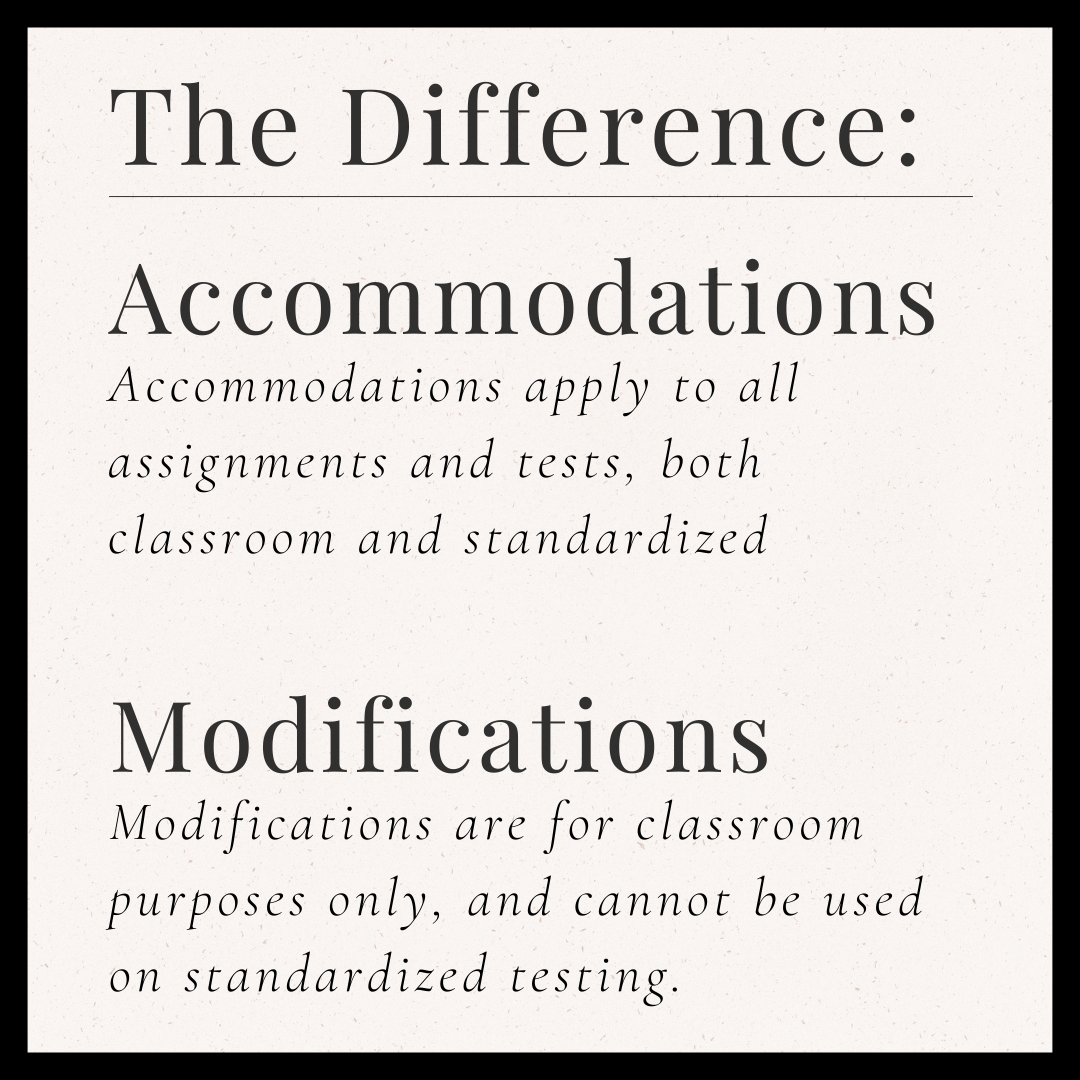
Accommodations include:
- Reader
- Scribe
- Paraphrasing
- Calculator
- Use of technology
- Manipulatives
- Reinforcement and behavior modification strategies
- Braille
- Interpreters
- Extended time.
Modifications include:
- Shortening an assignment
- Extending a deadline
- Changing different parts of an assignment.
Alternate Assessment
Includes: Kentucky Alternate Assessment Participation Guidelines Documentation Form & Learner Characteristics Inventory. This section is only applicable to individuals with the most significant disabilities. I will be going in depth on alternate assessment soon, as it is too much to provide a brief overview.
Program Modifications
Includes: Program Modifications & Supports for School Personnel that will be Provided. This section discusses anything that may be needed by adults to appropriately implement the child’s IEP. This can include modifying adult schedules to address toileting, feeding, or transition needs. It can also include any specialized training, such as Safe Crisis Management, that may be needed for anyone who works with the student. This section also includes consultation and/or collaboration with related service providers, general education teachers, other special education teachers, bus drivers and monitors, paraprofessionals, and any other relevant adults.
Least Restrictive Environment
Includes: Least Restrictive Environment (LRE) and General Education.
This section discusses how often a child will and will not be in the general education setting. Students with disabilities are required to be in the general education setting as much as possible.
This can look like a general education setting, a co-teach general education setting, a resource setting, or any mix of the above, depending on individual needs. The LRE also includes special circumstances, such as home hospital and institutions.
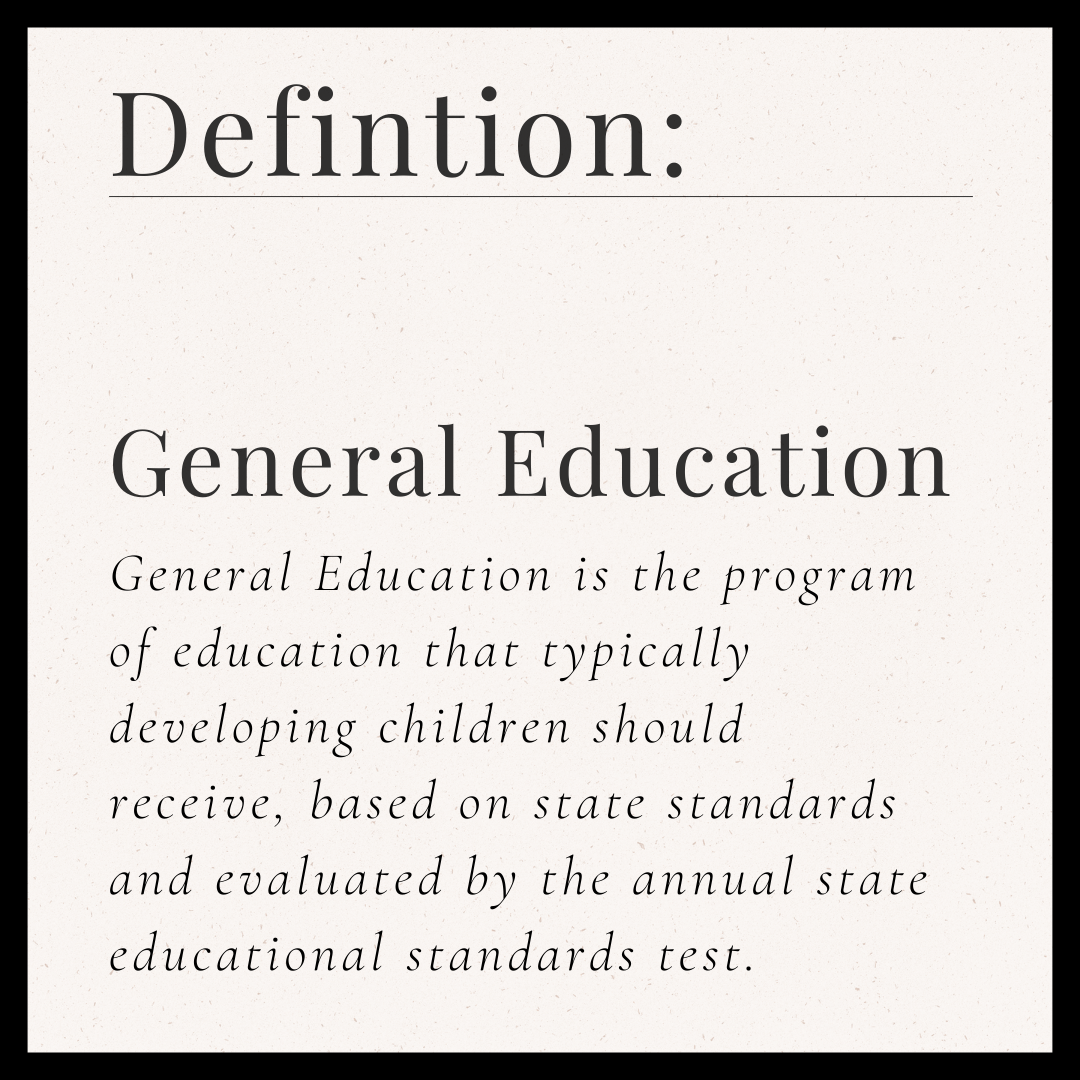
Special Education & Related Services

For special education services, each subject must be listed separately. The service minutes can vary based on setting (resource vs. general education) and level of need.
Special Education Services include:
- Reading/writing/language arts/English
- Math
- Science
- Social studies
- Daily living skills
- Social skills
- Pre-employment/transition skills.
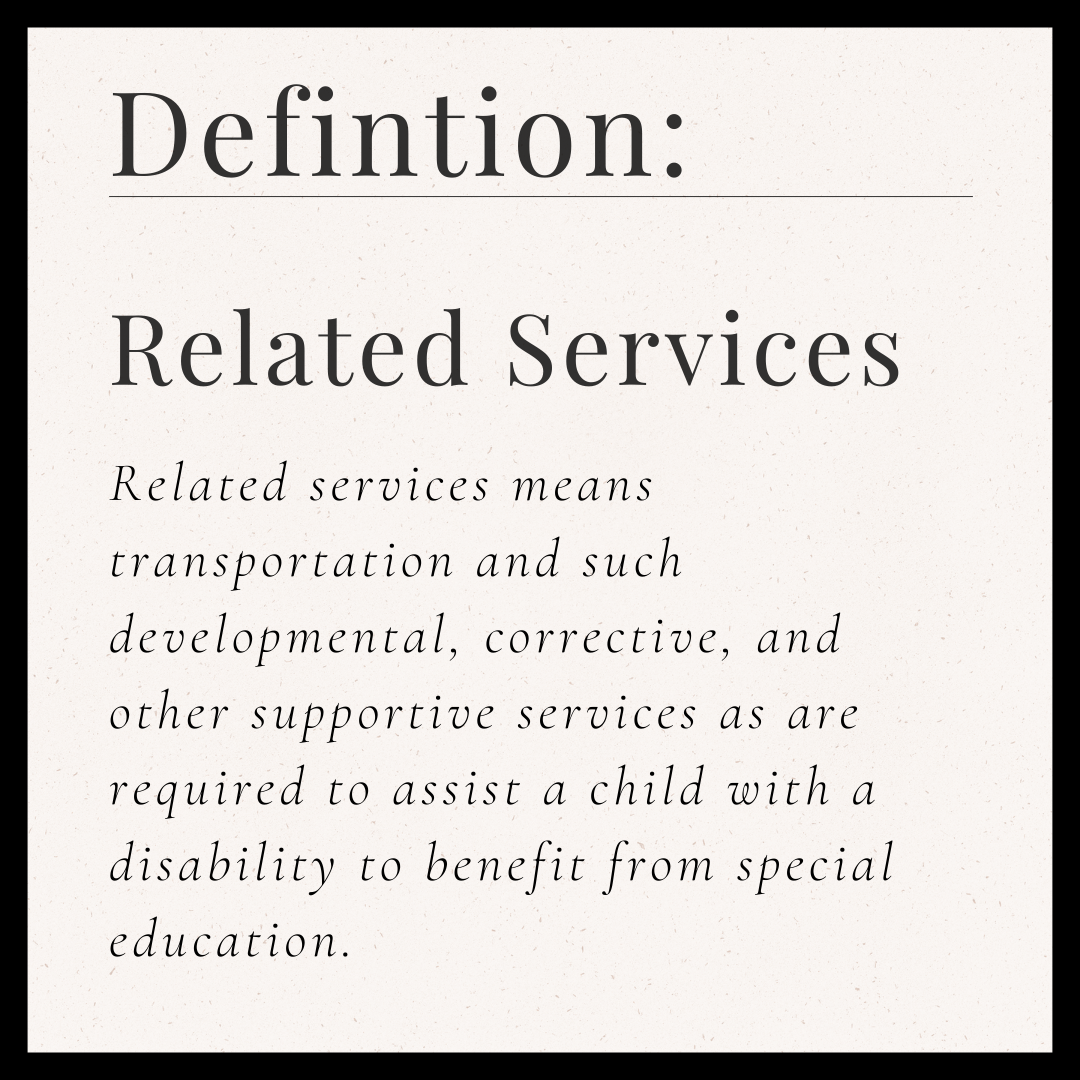
Related Services include:
- Speech, Language, and Audiology Therapy
- Physical therapy
- Occupational therapy
- Special transportation: wheelchair lifts, additional supervision/bus monitors
- Counseling Services: provided by qualified social workers, psychologists, guidance counselors, or other qualified personnel.
- Interpreting services: for children who are deaf, hard of hearing, or deaf-blind
- Orientation and mobility services: for blind or visually impaired children
- Medical services: Usually for medicine not administered orally
- May also include services for children who are 100% dependent for bowel/bladder maintenance and feeding.
Related services can all vary in frequency and duration, as well. It is notable that to qualify for these related services, the student's education must be impacted and require that specific skilled service to improve education. It is not the same as qualifying for outpatient therapy. In the outpatient and other settings, the goals and course treatment must and will be different than the service provided through the school system.
Extended School Year
This is not super common, but must be addressed at all annual IEP meetings. Extended school year is implemented if a child fails to make sufficient progress, or significantly regresses over school breaks, without the ability to recoup information once back in school. There must be data to support the decision and the services must occur outside of a regular school day, week, or year.
Summary
This blog has been an IEP in a nutshell. More in-depth information regarding IEPs and special education services to follow.
For more information, visit Kentucky Parent and Family Special Education Resources: https://education.ky.gov/specialed/excep/Pages/FamParRes.aspx
Resources used:
https://education.ky.gov/specialed/excep/forms/Documents/KYIEP10.26.18.pdf
https://education.ky.gov/specialed/excep/forms/Documents/IEP_Guidance_Document.pdf
